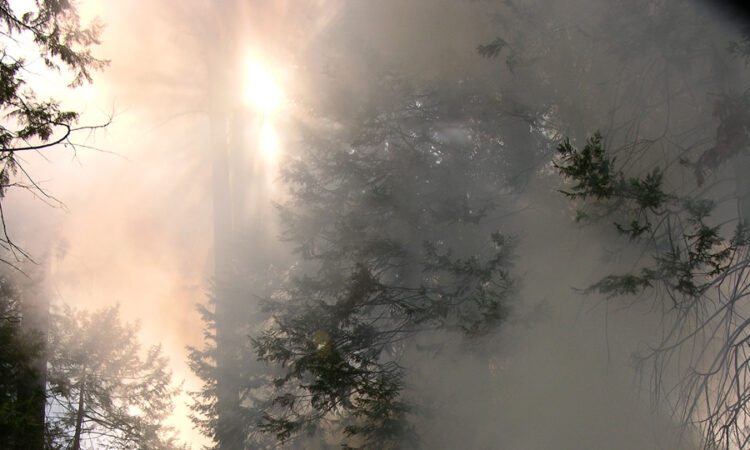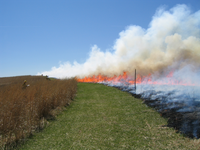

NPS
In the Northern Rockies, tribes such as the Salish, Pend d’Oreille, and others periodically set fire to the land for thousands of years, which had a profound impact on plant and animal communities. Fires were traditionally used to reduce the risk of more serious fires, to nurture the land to support specific vegetation used for food and medicine, to provide better quality grazing land for horses, and more. The Confederated Salish and Kootenai Tribes website contains a wealth of information, including information on landscapes shaped by fire and how fire suppression has changed them, elder interviews about fire, a Coyote fire story about the gift of fire, and information about the traditional use of fire by the tribes and how tribes are using fire on the landscape today (CKST, 2021).
Throughout California, Indigenous nations have used fire for thousands of years as a tool to steward the land, and still do today. When Europeans colonized California, they found a garden of redwoods and other lands. Evidence of this stewardship can still be seen on the trees at Muir Woods. Fire scars tell the story of Indigenous cultural burns set by the first stewards of Muir Woods, the Coast Miwok. Cultural burns passed down through generations have benefited both land and people, by improving soil quality, and spurring growth of certain plant species, creating a healthy and resilient landscape.
For more than 4,000 years, American Indians have relied on Yosemite Valley’s meadows and oak woodlands to provide food, medicine, and materials for baskets, string, and shelter. Yosemite’s early inhabitants periodically set fires to promote the growth milkweed, dogbane, sedge root, and bunch grass. Research on mud cored from Yosemite Valley showed a marked increase in ash deposits after people began living in Yosemite Valley.
Some tribes in the western states also used fire to ensure growth of straight and slender types of specific plants used for making woven baskets, or to provide habitat for certain bird species whose feathers were used for ceremonial dress (Roos, 2021).
